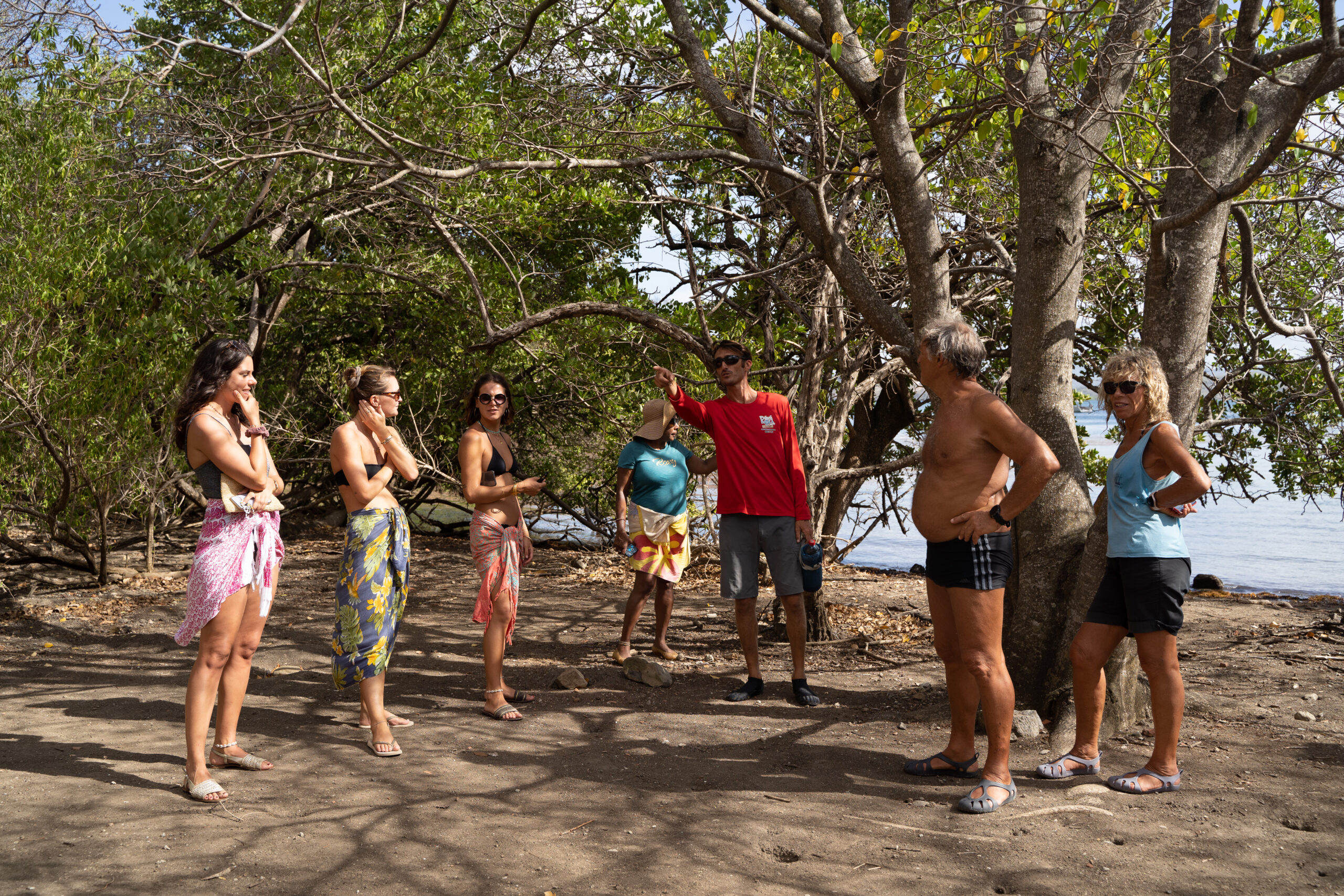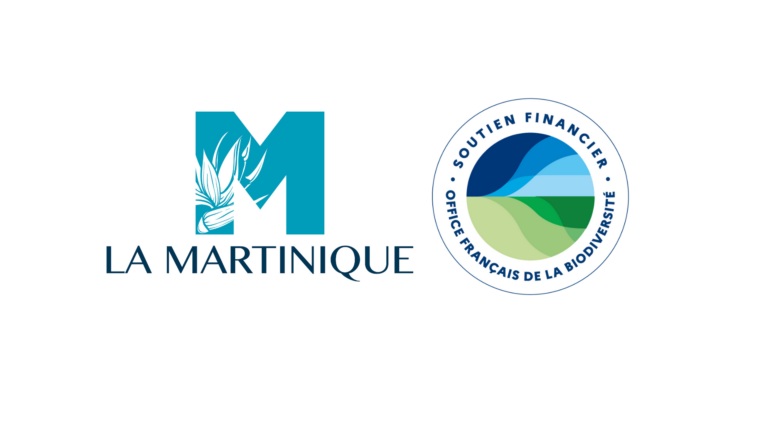9 initiatives locales de protection de la biodiversité en Martinique
La protection du milieu marin en Martinique profite d’un tissu associatif vivace et varié. De nouveaux acteurs émergent régulièrement sur cette scène écologique, pour le plus grand bonheur des fonds marins. Ces acteurs travaillent en étroite collaboration avec les institutions dont les missions et les actions convergent avec le milieu associatif.
Tour d’horizon des acteurs qui œuvrent au quotidien pour protéger la biodiversité liée au milieu marin et littoral en Martinique.
Le secteur associatif
Certaines de ces associations sont de taille réduite et reposent sur les efforts de leurs bénévoles, d’autres ont des dizaines de salariés et agissent sur tout le territoire. Certaines travaillent en étroite collaboration avec les institutions, leur offrant un lien direct avec la société civile, tandis que d’autres, montent régulièrement au créneau face aux décisions qu’elles jugent inégalitaires.
L’ASSO-MER, la spécialiste de la vie sous-marine
Depuis 2016, L’ASSO-MER participe à la protection et la valorisation du patrimoine marin martiniquais. S’inspirant du Lasotè, cette pratique séculaire martiniquaise consistant à travailler en commun pour labourer des champs à flanc de morne, il s’agit ici de travailler main dans la main pour participer à la sauvegarde du milieu marin.
L’ASSO-MER pratique notamment la science participative, avec le suivi des traces de ponte de tortues marines dans le Nord Caraïbe : chaque année des bénévoles sont formés pour effectuer ce suivi qui s’étale sur plusieurs mois durant la période de ponte.
Des éco-ambassadeurs sont par ailleurs formés pour animer des stands grands publics et alerter sur la pollution plastique, ou organiser des ramassages de déchets sur les plages. De nombreuses actions de sensibilisation sont aussi menées auprès du public scolaire, avec notamment deux AME (Aires Marines Educatives) créées en partenariat avec le Parc Naturel Marin de Martinique et des professeurs des écoles volontaires, désireux de guider leurs élèves vers une éco-citoyenneté active ancrée sur leur territoire.
Le Carbet des Sciences, pour une réappropriation des sciences par le grand public
Il s’agit ainsi du leitmotiv de cette association existant depuis presque 30 ans, en tant que Centre de Culture Scientifique, Technique et Industrielle (CCSTI) de Martinique. Comme tous les CCSTI de France, le Carbet des Sciences a pour “but de favoriser un partage des savoirs en offrant au plus large public les moyens de s’informer et de réfléchir sur les évolutions scientifiques et techniques de notre temps.” Ainsi, les problématiques abordées sont aussi larges que les problématiques scientifiques : nutrition, santé, eau, énergie, biodiversité et archéologie.
Son Pôle Mer, orchestré par Mathilde Brassy, plongeuse et biologiste marin, organise des animations en milieu scolaire, lors de manifestations grand public et participe aussi à des projets d’envergures comme la réalisation du sentier marin des îlets du François.
Carouge, les spécialistes des oiseaux mais pas que !
“La nature c’est l’interaction, et sans interaction il n’y a pas de vie”, disait le président de l’association Le Carouge David Belfan, qui explique parfaitement le fonctionnement de cette association foisonnante avec une assise historique sur le territoire.
Créée en 1989 par des passionnés de la faune et la flore martiniquaise, cette association naturaliste est sur tous les fronts, tant que l’enjeu de la biodiversité est présent : balades naturalistes mensuelles (ouvertes aux non-adhérents), suivi annuel des Iguana Delicatissima sur l’îlet Chancel (les iguanes endémiques de Martinique, fortement menacés par la présence des iguanes communs sur l’île), mais aussi études ornithologiques ou formation des acteurs du tourisme.
L’association Martinique Réserve Mondiale de Biosphère
Depuis 2017, ce groupement d’acteurs de tous bords : élus, entreprises, associations et personnalités porte le projet de faire obtenir pour la Martinique le titre de l’UNESCO de Réserve Mondiale de Biosphère.
En septembre 2021, la Martinique a obtenu son titre et intégré un réseau mondial de plus de 700 Réserves de Biosphère dans 131 pays.
Un titre mondial qui engage la Martinique à valoriser ses richesses humaines, naturelles et culturelles, dans une dynamique de développement économique et social durable. Et encourage également la recherche scientifique et l’éducation à l’environnement.
L’association assure désormais la coordination des activités de la Réserve mondiale de Biosphère et la co-animation du Comité de gestion et des commissions de travail. Elle est aussi le contact privilégié du réseau des Réserve de Biosphère en Martinique.
Dernier fait d’arme : faire entrer la Montagne Pelée et les Pitons du Carbet dans le patrimoine mondial naturel de l’UNESCO, une inscription validée en 2023 !
D’autres associations plus jeunes font également bouger les lignes
Avec Coco AN DLO, Coraly Balmy entend répondre à deux enjeux de taille : la lutte contre les accidents de noyade et la protection du milieu marin. Cette ex-nageuse olympique, enfant adorée de Martinique, a obtenu en 2021 le Prix Sport Planète, décerné par la MAIF pour son initiative associative. La nécessité de faire quelque chose pour sa terre natale a notamment été marquée par son expérience de soigneur animalier en Méditerranée. C’est ainsi qu’elle propose des stages de natation en mer pour les jeunes de 4 à 17 ans, mais également des programmes de formation pour les professeurs des écoles désireux de prendre part à l’aventure.
Avec son équipe, l’association Roots Of The Sea est impressionnante de dynamisme. Projets de restauration de mangrove en partenariat avec d’autres territoires ultramarins, participation à l’OceanHackathon, tenues de la caravane Tortues Marines… Cette association est un bel exemple de l’implication de la jeunesse martiniquaise pour la protection de son patrimoine écologique.
Le secteur institutionnel
Avec ses antennes locales, ses services, ses plans nationaux d’actions spécifiques aux espèces menacées, l’Etat français est largement présent dans les actions du territoire, toujours en étroite collaboration avec la société civile, bien souvent par le biais du secteur associatif.
Le Parc Naturel Marin de Martinique (PNMM)
Dernier né des Parcs Naturels Marins, le PNMM est une aire marine protégée. C’est un outil dont le but est de participer à la protection du milieu marin dans une logique de développement durable. Si les salariés du parc font tous partis de l’OFB, sa gouvernance est mixte avec un comité de gestion intégrant la diversité des acteurs de la mer en Martinique.
Ses sept orientations, propres à l’île et ses enjeux sont : la connaissance, la sensibilisation, la préservation, l’exploitation durable, la conciliation, les activités responsables et la surveillance.
Concrètement, ses actions recouvrent un large spectre. Il peut s’agir de mettre en place des zones protégées (pêche réglementée, mouillages forains interdits avec la mise à disposition de bouées), de mener ou de commanditer des études scientifiques (cartographies, impacts des activités humaine sur une population marine… les champs sont larges), d’accompagner des professionnels (aide à la réduction de l’impact des événements nautiques, formation des professionnels de la mer ou suivi d’un projet innovant comme Voile Nature), d’améliorer la qualité de l’eau avec des études sur l’impact des sargasses, le soutien de projet de récupérations de déchets, ou encore une mission de sensibilisation auprès des plaisanciers.
Enfin, sa mission de sensibilisation au milieu marin et ses enjeux amènent le PNMM à organiser des événements, participer à de nombreuses manifestations grand public, mais aussi utiliser ce merveilleux outil que sont les Aires Marines Educatives, permettant de faire entrer la mer dans les écoles.
Agoa, le sanctuaire des mammifères marins
Comme le Parc Naturel Marin, le Sanctuaire Agoa est une aire marine protégée, elle, entièrement tournée vers la protection des mammifères marins. Aussi, son territoire d’action est plus étendu : sur 143 256 km2, “le Sanctuaire couvre toute la zone économique exclusive des Antilles françaises, soit les eaux de la Martinique, de la Guadeloupe, de Saint-Martin et Saint-Barthélemy.”
Ses missions sont à la fois liées à la connaissance des espèces protégées, à la sensibilisation pour leur protection, mais aussi à l’accompagnement des acteurs économiques dont le travail impacte la vie des mammifères marins. Une grande importance est également donnée à la coopération internationale, avec les autres Etats de la Caraïbe, en s’appuyant sur le protocole SPAW (Specially Protected Areas and Wildlife), instrument législatif de protection de l’environnement dans la zone Grande Caraïbe.
Le Réseau Iguane des Petites Antilles
Pour permettre la conservation de l’iguane des petites Antilles, l’Iguana Delicatissima, classé en danger critique d’extinction, il existe un Plan National d’Action (PNA) piloté par le Préfet de Martinique, (représenté par la DEAL) et coordonné par l’ONF (Office National des Forêts). Les actions menées par le réseau, qui regroupe de nombreux acteurs (associations, acteurs institutionnels, bénévoles) regroupent à la fois un suivi scientifique, de la sensibilisation (avec la caravane iguanes qui sillonne la Martinique) mais aussi des actions de conservation très concrètes, notamment à l’îlet Chancel.
Le Réseau Tortues marines Martinique
Comme leur cousin l’iguane, les tortues marines, ont elles aussi un Plan National d’Action animé dans le cadre d’un réseau multipartenaire. Il est également piloté par la DEAL (Direction de l’Environnement, de l’Aménagement et du Logement) et animé par l’Office National des Forêts. Il profite aux cinq espèces de tortues marines que l’on peut croiser sur les plages ou dans l’eau aux Petite Antilles.
En Martinique, il s’agit plus spécifiquement des tortues Luth, Vertes et Imbriquées. La caravane tortue permet des actions de sensibilisation à travers la Martinique, avec des animations gérées par des associations de protection de l’environnement. Pour le volet connaissance, plusieurs axes sont étudiés : chaque année est réalisé un suivi des traces de ponte, mais également des études sur l’impact de l’activité humaine sur les pontes, ainsi qu’un suivi des populations en alimentation (pratiqué principalement sur les tortues vivantes, se nourrissant sur les herbiers de la Côte Caraïbe). En ce qui concerne la conservation, des actions de lutte contre toutes les formes de dérangement ou de captures (accidentelles ou pas) sont également à l’œuvre.
Rédigé par : Jessica CHEKROUN




